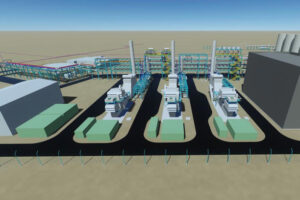Sustainable buildings aren’t simply about being seen to be green
Sustainability should be integral to the design of public sector developments. But that doesn’t mean adding green technology for the sake of it
The issue of sustainability tends to be high up the list of priorities when commencing a new development – even more so if a public sector client is involved.
Whether it’s a local authority or government department, there’s a balancing act between the need to lead by example while protecting the public purse. Every project must be reviewed for sustainability, if not by the client then always by the design team. There are systems such as BREEAM that provide a scoring system that ensures if you tick enough boxes to get the required score then the job is done. However, any checking system still depends on critical judgment to ensure decisions are made for the right reasons. We should question if a generic scoring system can be applied equally to all building types in all situations.
But no system is a replacement for common sense. Employing systems to get points without considering the practical implications is a short road to a bad place, and you don’t have to look far for examples of sustainable technology that failed to deliver.
There is an abundance of sustainable technology out there, and any responsible designer will have the broad knowledge base required to advise clients on the most suitable options. The first stage is to collate what’s available, whether it’s simple solar shading or high tech nano insulation. With increasing pressure on clients to demonstrate process as well as value for money, producing a list of all technologies makes a useful starting point. By listing pros and cons of each item and providing an initial recommendation, a starting point is created that can be easily reviewed and tracked by all parties – including the cost consultant.
When it comes to cost, a client ought to be easily sold on items that have short payback periods and long-term gains. If an item is cost neutral but benefits the environment it should still be considered a positive – but convincing a client of this can be a challenge. Other less measurable benefits are the perceived value added in PR, saleability or rental uplift for those that want to be seen buying into sustainable design. This should not be underestimated and ought to be part of the discussion.
What should be avoided are technologies that are employed purely to be seen to be green. Vast solar arrays or geothermal technology may make a visually arresting statement, but they may cost more in environmental terms than they deliver over their life span. These technologies not only carry up front expense but also long-term training requirements for the maintenance teams which adds to the cost of the running the facilities. Even simple passive approaches, using sustainably sourced materials, might carry hidden environmental costs, such as in terms of transport.
Now, more than ever, public sector developments must maximise value for money over the long term. Future proofing buildings so that future technology can be added at a later date could pay dividends. For example, consider including extra plumbing, electricals and loadings or incorporate design features that leave the door open to adaptations in the future. This will not only add value but potentially extend the life of the building.
At the end of the day, the most sustainable thing we can do is ensure our buildings remain useful and fit for purpose long after they have been completed.
Andy Tropia is director at Jordan and Bateman Architects. The practice specialises in complex public sector projects and has completed prestigious public sector developments throughout the world.
Photo by Rob Harrison 















